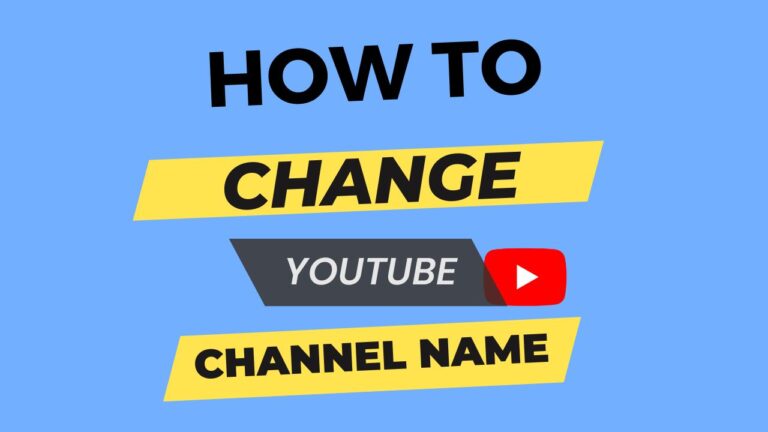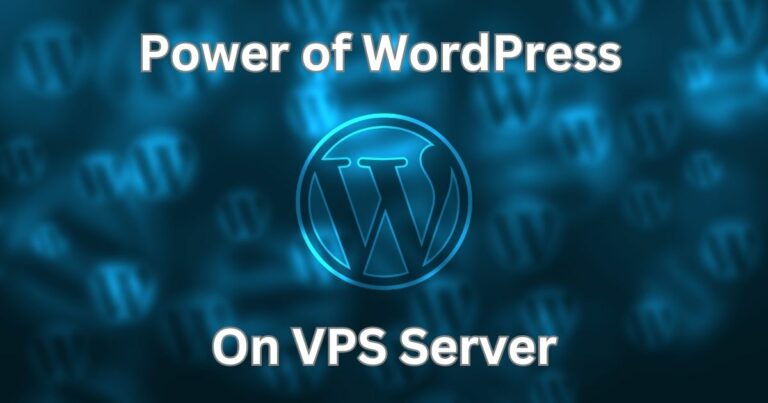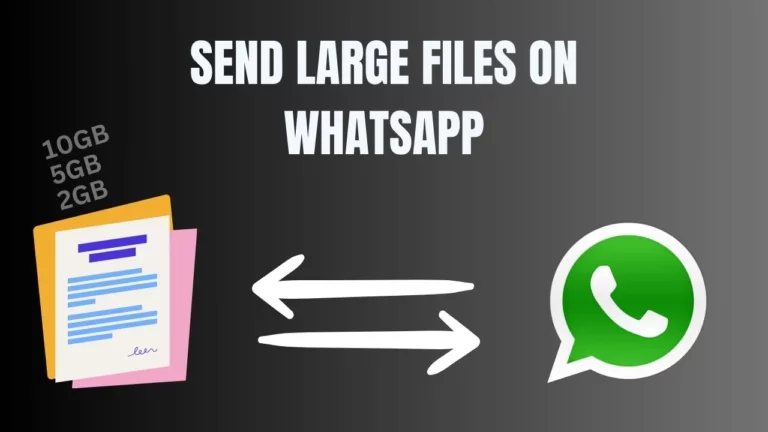9 Best Ways to Speed up Website Load Time
Are you frustrated with your website taking forever to load? A slow site can turn visitors away before they even get a chance to see what you have to offer. If you’re wondering how to speed up website load time and make it more efficient, you’ve come to the right place.
In this article, I’ll discuss practical tips and techniques to improve your site’s speed, enhance user experience, and potentially boost your site’s visibility on search engines. Let’s start and optimize your webite for faster performance!
A quick note: The tips and techniques outlined in this article are applicable to both WordPress and custom websites alike.
Table of Contents
What is page speed?
Page speed is basically how fast your content shows up when someone goes to a page on your website. It’s different from overall website speed because it’s just about one specific page.
Lots of things can affect how fast a page loads. Some big ones are:
- How many pictures, videos, Fonts and other stuff are on the page
- What themes and plugins you’ve got on your site
- How the page is coded and what scripts are running behind the scenes
All of this stuff adds up and can make your page load faster or slower. And let’s be honest, nobody likes waiting around for a slow webpage to load. It’s a big turn-off for visitors, and they’re more likely to leave if your pages take too long to show up.
Why does website load time matter?
Well, every second counts when it comes to how fast your pages load. According to Google, if it takes more than three seconds for a page to load, there’s a 32% chance that visitors will just leave right away. And if it takes five seconds or more, that chance jumps up to a whopping 90%.
In simple terms, if your pages don’t load fast, people are more likely to leave your site without even sticking around. Plus, slow pages can hurt your chances of getting people engaged or making sales.
Page speed is also super important for showing up in Google searches. Google looks at lots of things when deciding which websites to show first, and speed is one of them. Whether someone’s searching on their computer or their phone, if your site loads slow, it might not show up as high in the search results.
Slow pages can make your brand look bad. If people have to wait forever for your site to load, it can make you seem unprofessional and like your site isn’t reliable.
So, if you want your website to be the best it can be, you need to focus on making sure your pages load fast. And the first step is figuring out how they’re doing right now.
1- Choose Good Hosting: Key to Speed up Website Load Time
This is the most import factor that is mostly ignored.
In fact, last year, I was using shared hosting for my websites, and the outcome wasn’t satisfactory. However, a couple of months ago, I made a significant move by migrating my sites from shared to VPS hosting. Now, I can proudly say the results have improved remarkably.
Importantly, I want to highlight that when I made the switch, I didn’t undertake any additional measures to enhance the performance of my websites apart from migrating them to this new VPS host.
Here is the pagespeed insights result of one of my websites Aiwebranker that was on shared hosting a couple of months ago.

After moving to VPS hosting the result was extra ordinary, here is the result after moving my site to VPS hosting.

Choosing the Right VPS Hosting Provider
When selecting a VPS hosting provider, it’s essential to consider factors such as performance, reliability, support, and pricing. While there are numerous options available, two providers stand out in terms of reliability and performance: Contabo and Cloudways.
Contabo: Ideal for users with Linux command experience, Contabo offers robust hosting solutions with its own data centers. While suitable for advanced users, it may require some technical expertise to fully utilize its features.
Related: Contabo Review
Cloudways: Cloudways offers managed hosting with a user-friendly interface, making it accessible to beginners and experienced users alike. With features like one-click installations, automated backups, and 24/7 support, Cloudways simplifies the hosting experience.
Related: Cloudways Review
If you’re considering making the switch to VPS hosting, I highly recommend Cloudways for its user-friendly interface, robust features, and exceptional support. With Cloudways, you can elevate your website’s performance and take your online presence to new heights.
However, if your preference is going with Cloudways, don’t forget to use my Coupon code: DCRAFT15
If you’re interested in learning more about VPS hosting, you might find my video helpful in making your decision. Check it out to get a better idea of what this hosting is all about!
If you still need to go with shared hosting, you can pick any shared hosting that has good reputation, however, in my experience following shared hosting providers are more trust worthy and provide good performance.
2- Optimize Images
So, you know when you want to put pictures on a website, but they take forever to load? Well, image optimization fixes that. It makes your pictures smaller without making them look bad. This means they load faster on your website.
There are three main ways to optimize images. You should use all of them to make sure your pictures look good and load quickly.
File Types
When it comes to images on the web, there are a few types you’ll encounter: JPEG, PNG, WebP, GIF, and SVG.
JPEGs are great for photos or images with lots of colors. They compress the file size to make them easier to load without sacrificing too much quality.
PNGs are good for simple images or ones that need transparency. They keep a high quality, but may have a larger file size compared to JPEGs.
GIFs are mainly used for animated images. They have a limited color palette but can be compressed without losing quality.
WebP is another image file type you might come across, which offers both high quality and smaller file sizes, making it a good choice for web images.
If you’re using abstract illustrations, like shapes for a background, SVGs might be your best bet. They’re different from other image types because they’re based on text, not pixels. This means they’re smaller and load faster.
Image Dimensions
Best way to optimize images for a website, is resizing them. Let’s say you snap a photo with a DSLR camera. That picture may have 6000×4000 pixels or larger dimensions and take up 10MB to 16MB megabytes of storage. That’s like four times the size of a regular website!
But don’t worry, you can shrink that down. By resizing the image, you can make it way smaller without losing much quality. Let’s say the maximum display size of your website or blog is 800 pixels wide. You could resize the image to 1200×630 pixels. It’s still clear and crisp, but it’s way smaller than the original, so it loads faster on your website, even on super sharp screens.
If you’ve got a good image editor like Photoshop. I also use Photoshop, it’s pretty easy to resize or crop images to fit nicely on your website without taking up too much space.
Compression
When making your images even smaller, you’ve got a couple of options: lossy and lossless compression. Lossy compression looks for and gets rid of extra pixels in your image, while lossless compression rearranges the data without messing with the pixels themselves.
To compress your images online, you can use web tools. They’ll help you shrink down your images without losing too much quality.
3- Run Speed Tests
Making sure my website loads quickly is super important for giving visitors a great experience and boosting my site’s ranking on search engines. Here’s what I’ve learned about running a website speed test:
First off, I use different speed testing tools to get the most accurate results because each tool might show different numbers. It’s like getting a second opinion.
I also test my website from different server locations to see how it performs in different parts of the world. This helps me make sure everyone, no matter where they are, can access my site quickly.
Another thing I do is monitor real user experiences to see how my visitors actually perceive my site’s speed. This gives me a better idea of what it’s like for them.
When it comes to testing my site’s speed, I rely on tools like Google PageSpeed Insights.
4- Minify HTML, CSS and Javascript
Another trick I use is to minify HTML, CSS, and Javascript files. These files contain codes that help build your website, but sometimes they have extra spaces and unnecessary stuff that can slow down your page.
What minifying files does?
It combines all the Javascript files, for instance, into one streamlined file. Then, it removes all the extra spaces and bulky code, making the file smaller and easier to load. The less stuff your page has to load, the faster it’ll be for your visitors.
5- Use CDN
Using web apps means lots of back-and-forth with the server. But caching saves the day! It stores stuff in your browser, so pages load faster later. Plus, CDNs spread images around the world for even speedier loading.
Why should you use CDN?
One big reason why I think businesses like yours should think about using a CDN is because it helps deliver content to our users from the closest location. This means less waiting time for them, which is awesome. And why does this matter so much? Well, think about it – we all want things to happen quickly, right? Whether it’s avoiding traffic or skipping lines, even a few seconds can make a big difference. So if I have the option, I’d always go for the fastest route possible. That’s why a CDN is worth considering for us.
If you’re using Cloudways for your hosting, they’ve got a handy feature called CloudflareCDN that you can access right from your account dashboard. Let me show you an example.
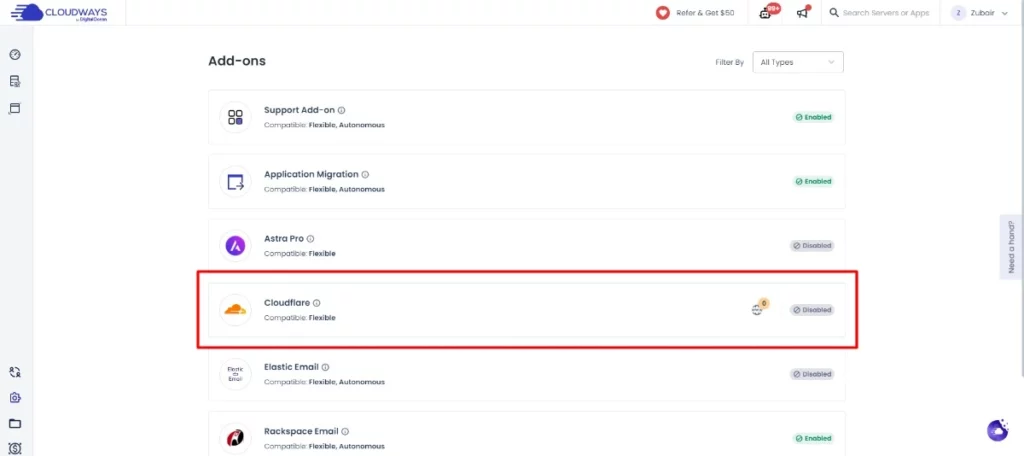
6- Reduce your redirects
I’ve learned that it’s best to keep redirects to a minimum on my website.
Only use them if you really need to, and make sure they’re the type that doesn’t slow things down too much. Too many redirects can make your page load slower because the browser has to take extra steps to get to the new page. If you do have redirects, go for the 301 or 302 server-side ones because they’re the quickest.
I’ve found that having too many plugins on my website can slow things down and sometimes cause issues. Even though plugins can be helpful, it’s best to avoid having too many that I don’t really need. So, I make sure to regularly check and review all the plugins I have installed. If there are any that I’m not using anymore, I just get rid of them. This helps keep my website running smoothly and loading quickly.
7- Delete unnecessary plugins
I’ve found that having too many plugins on my website can slow things down and sometimes cause issues.
Even though plugins can be helpful, it’s best to avoid having too many that I don’t really need. So, I make sure to regularly check and review all the plugins I have installed. If there are any that I’m not using anymore, I just get rid of them. This helps keep my website running smoothly and loading quickly.

Before you start making changes to your plugins, make sure to back up your website. It’s important to have a safety net in case anything goes wrong. If you’re comfortable with staging management, consider working on your website in a staging environment first. This allows you to test changes without affecting your live site.
Many hosting providers offer staging features along with their hosting plans, so you might already have access to this useful tool.
8- Keep Website Theme Updated
If you’re using WordPress for your website, it’s important to choose a theme that doesn’t slow things down. Some themes come with lots of cool features, but they can make your pages load slowly.
Sometimes, it’s better to go for a simpler theme to keep your site running fast. Also, make sure you’re using the latest version of your theme.
Following are some free themes that I have tested and my tools’ website Aiwebranker is equipped with one of these themes that is Kadence.
These themes are free and work well for different types of websites. But if you have some money to spend, you can also check out premium themes on Envato Market. It’s a place where you can buy and sell plugins and themes. You can find high-quality and fast themes there for around $40 to $70. It’s worth considering if you want more options and features for your website.
9- Enable Browser Caching
When you enable browser caching, it means that when people come back to your website, it’ll load much faster because their browsers remember files of it.
To do this, I use a plugin called W3 Total Cache. It’s really quick and gets the job done well. Once you set it up, you’ll notice your website loading faster right away. Give it a try, it’s worth it!
Alternatively, you might consider WP Rocket, a premium plugin known for optimizing caching techniques on websites. It handles tasks like image optimization, caching, and minifying JavaScript and CSS, among other cache-related factors.
Another cool thing about caching plugins is Gzip Compression.
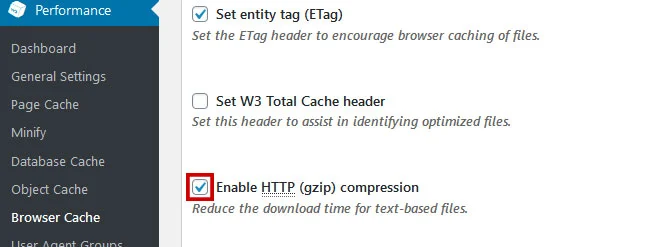
When you compress your website files using Gzip, your pages load much faster. It’s super simple to do, and it makes a big difference in how fast your site loads. With Gzip, your files can be downloaded up to 70% faster, which really improves the user experience.
Final Thoughts
By implementing the suggested strategies and leveraging the expertise shared here, website owners can can improve performance and speed of their website, attract more visitors, and ultimately achieve greater success online.
I hope this article will be of much help to improve loading speed of your website
If you have any questions, feel free to ask in the comments. Good luck with your own website speed testing and maintenance!
Disclosure: This blog article contains affiliate links, and if you make a purchase through these links, I may earn a commission at no additional cost to you. Your support through these links helps sustain and improve the content on this platform.

